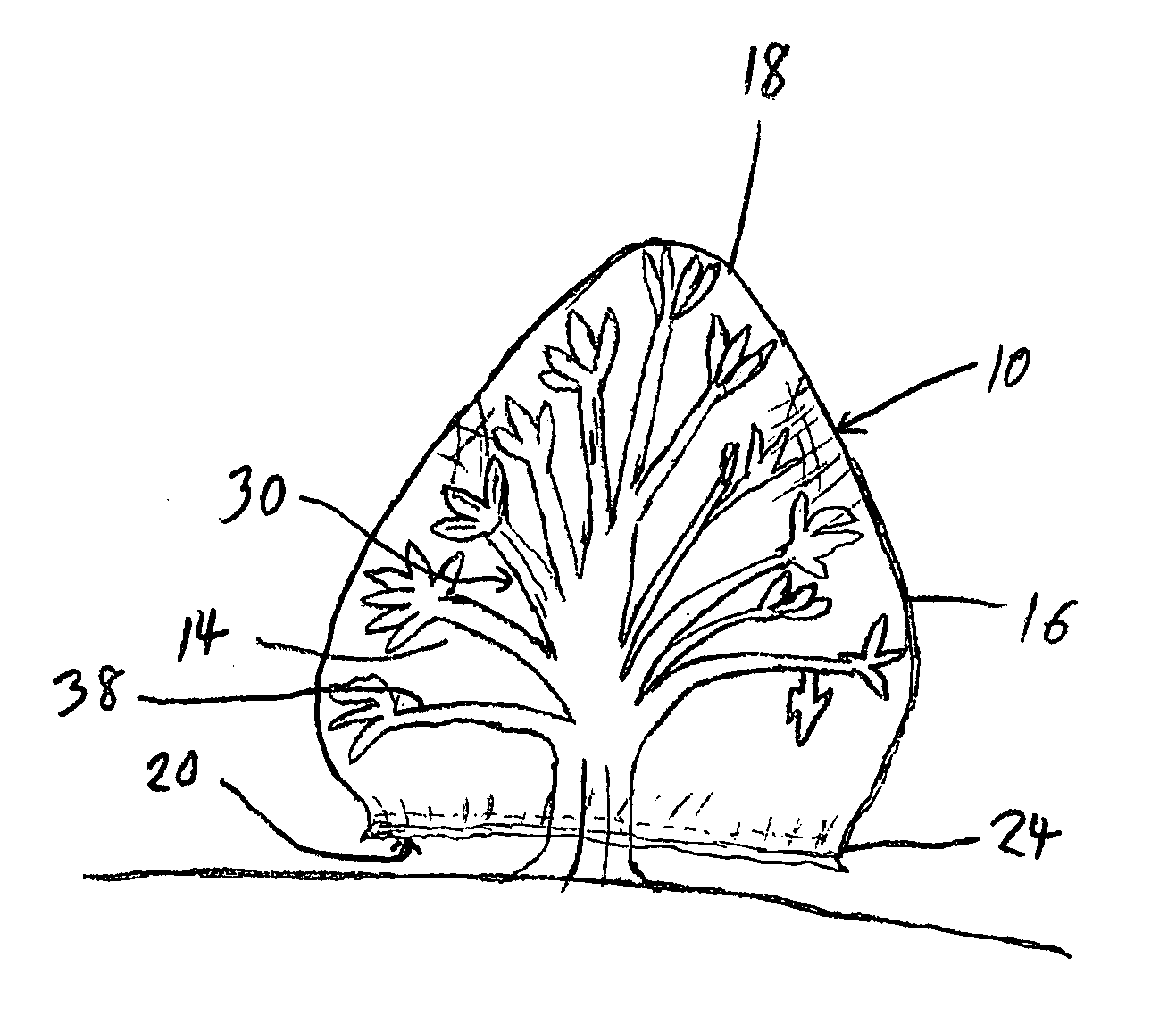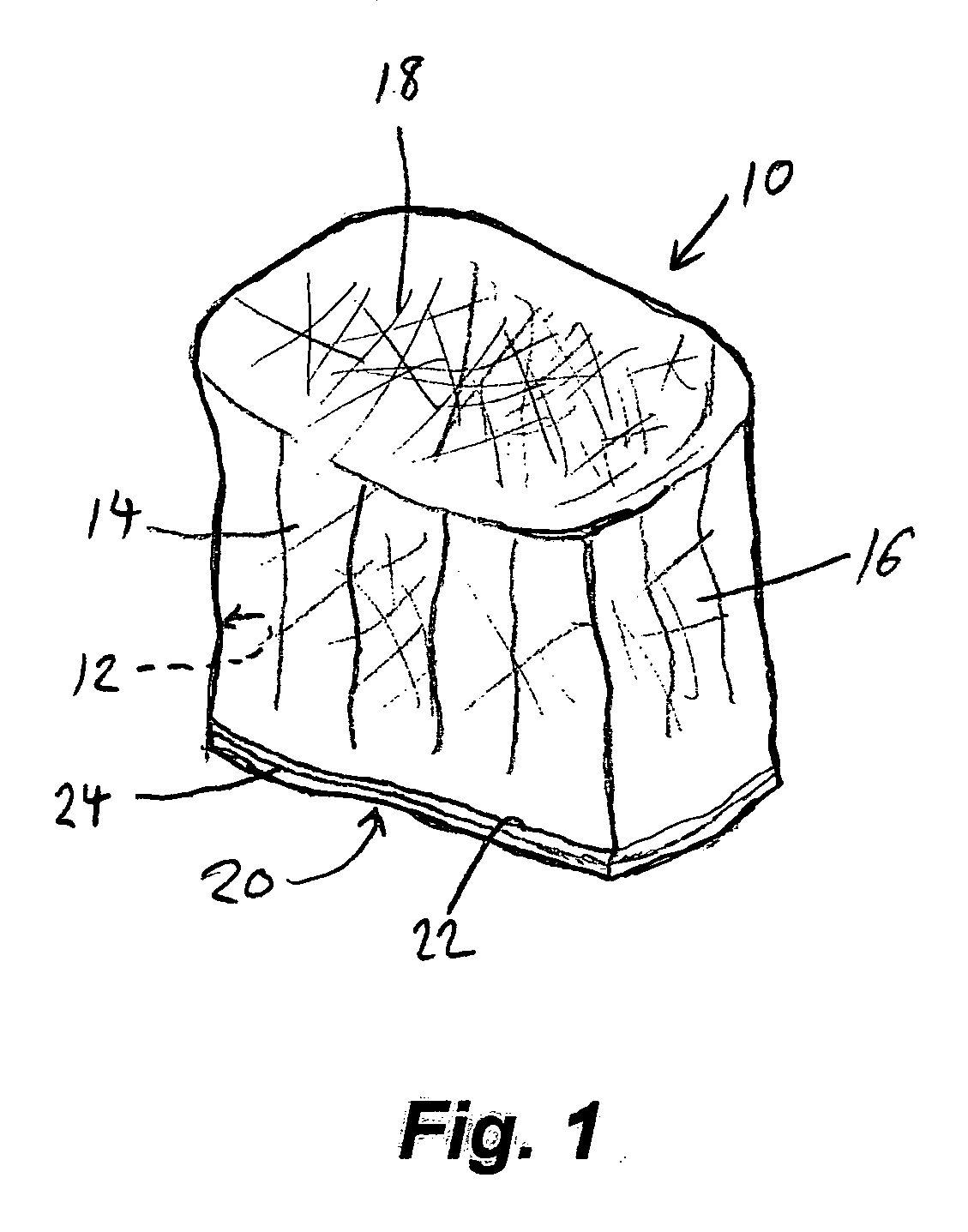Frost protection for plants
a technology for plants and covers, applied in the field of plants' frost protection, can solve the problems of long time, many small trees, shrubs, garden plants are highly susceptible to frost damage, and no acceptable commercial products for frost protection, and achieve the effect of easy removal
- Summary
- Abstract
- Description
- Claims
- Application Information
AI Technical Summary
Benefits of technology
Problems solved by technology
Method used
Image
Examples
Embodiment Construction
[0017]FIG. 1 depicts an exemplary frost cover 10 for a plant or group of plants. The frost cover 10 is formed as a bag or sack to define an interior enclosure 12. The frost cover 10 is fashioned from a spun-bonded mesh fabric of a type known in the art for fluid filtration. One currently preferred mesh membrane for this application is a polypropylene spun-bonded mesh sold under the commercial name REEMAY®. Other suitable mesh membranes are Tyvek®, a spun-bonded olefin material available from DuPont Corporation. However, other meshes and fabrics having the same or similar properties may be used instead. A currently preferred thickness of the mesh membrane is from approximately 6 to approximately 9 mils. The mesh membrane is a semi-transparent, air-permeable and moisture permeable fabric that permits light and water to pass through to a plant beneath. Frost, however, will form and crystallize on the outer surface of the cover 10. As illustrated in FIG. 1, the frost cover 10 provides f...
PUM
 Login to View More
Login to View More Abstract
Description
Claims
Application Information
 Login to View More
Login to View More - R&D
- Intellectual Property
- Life Sciences
- Materials
- Tech Scout
- Unparalleled Data Quality
- Higher Quality Content
- 60% Fewer Hallucinations
Browse by: Latest US Patents, China's latest patents, Technical Efficacy Thesaurus, Application Domain, Technology Topic, Popular Technical Reports.
© 2025 PatSnap. All rights reserved.Legal|Privacy policy|Modern Slavery Act Transparency Statement|Sitemap|About US| Contact US: help@patsnap.com



